Cold & Compression Therapy
Key Benefits

Key Benefits








Rest the injured area.

Ice for 20-30 minutes at a time, several times per day.

Compression helps to reduce swelling.

Elevate the injured limb 6 to 10 inches above the heart.


E P Su 1, M Perna, F Boettner, D J Mayman, T Gerlinger, W Barsoum, J Randolph, G Lee J Bone Joint Surg Br . 2012Nov;94
A cryopneumatic device used after TKA appeared to decrease the need for narcotic medication from hospital discharge to 2 weeks post-operatively. There was also a trend toward a greater distance walked in the 6MWT. Patient satisfaction with the cryopneumatic cooling regimen was significantly higher than with the control treatment.


Björn Kullenberg , Staffan Ylipää, Kerstin Söderlund, Sylvia Resch Arthroplasty . 2006 Dec;21(8):1175-9. doi:10.1016/j.arth.2006.02.159.
Mean time in hospital of patients with cold compression averaged 4.8 days vs 6.2 days in the control group. The study shows that cold compression therapy improves the control of pain and might thus lead to improvement in ROM and shorter hospital stay.
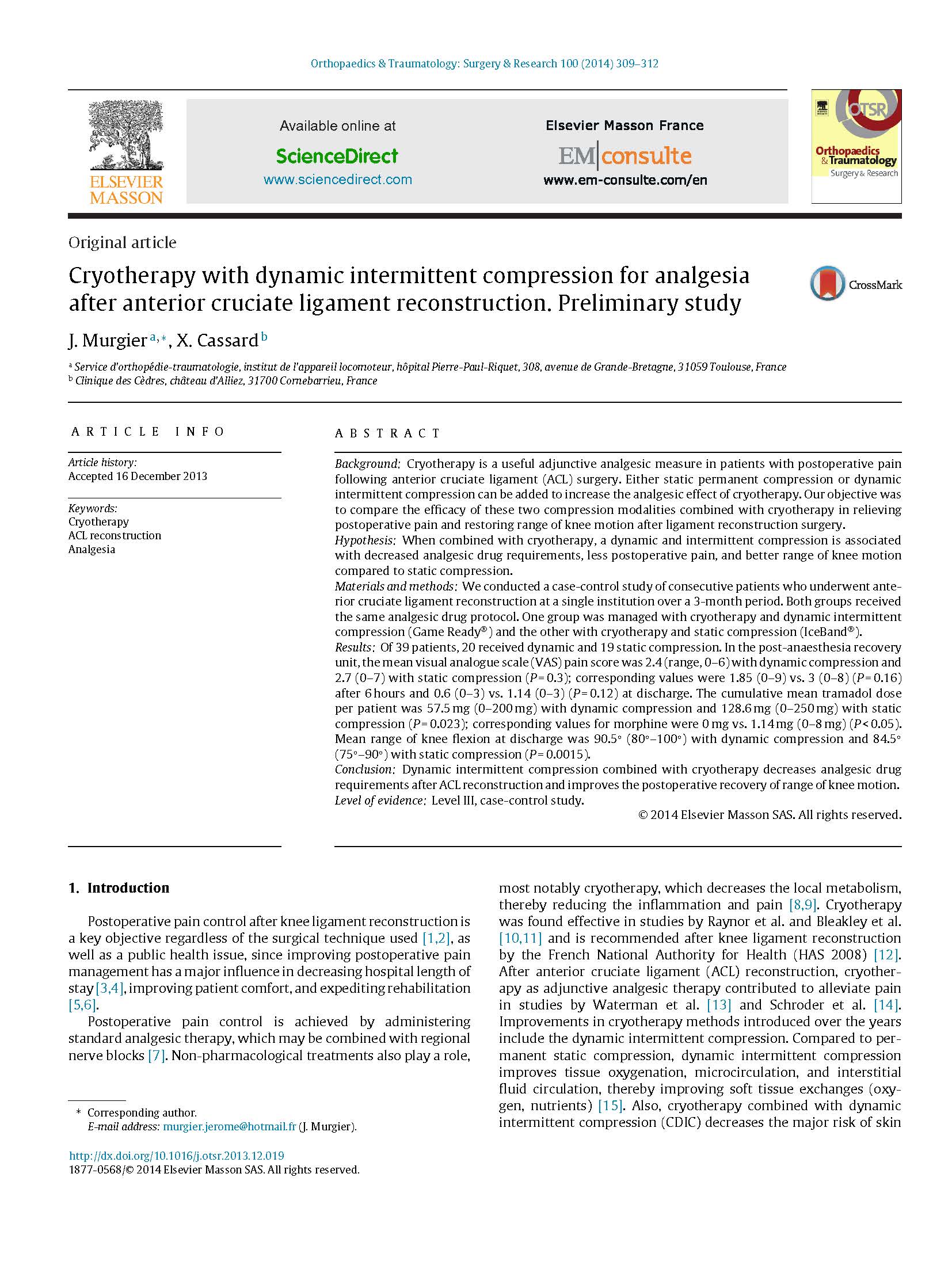

Jérôme Murgier , J Cailliez, M Wargny, P Chiron, E Cavaignac, J M Laffosse J Arthroplasty . 2017Sep;32(9):2788-2791. doi: 10.1016/j.arth.2017.03.052. Epub 2017 Mar 31.
This is the first report dealing with the use of CCT after rTKA. According to our results, it improves the recovery of patients who underwent rTKA; thus, it should be integrated in to our daily practice.

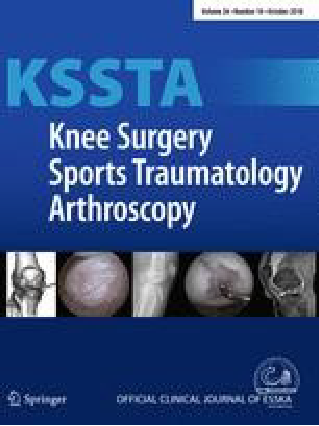
D. Schröder & H. H. Pässler Clinical and Biomechanical Papers Published: September 1994
Twelve weeks after surgery, isokinetic testing was performed, and the functional knee score was determined. In the CC group, significantly less swelling was observed (P<0.035). These patients also reported less pain and had a significantly reduced consumption of analgesics (P<0.04). On all examination days, ROM in the CC group was up to 17° greater than in the ICE group (P<0.02). The functional knee score was significantly increased in the CC group (P=0.025). The results from our study document the advantages of continuous cold-compression therapy over cold alone following ACL reconstruction.


J Murgier , X Cassard Orthop Traumatol Surg Res.2014 May;100(3):309-12. doi: 10.1016/j.otsr.2013.12.019.Epub 2014 Mar 25.
Dynamic intermittent compression combined with cryotherapy decreases analgesic drug requirements after ACL reconstruction and improves the postoperative recovery of range of knee motion.
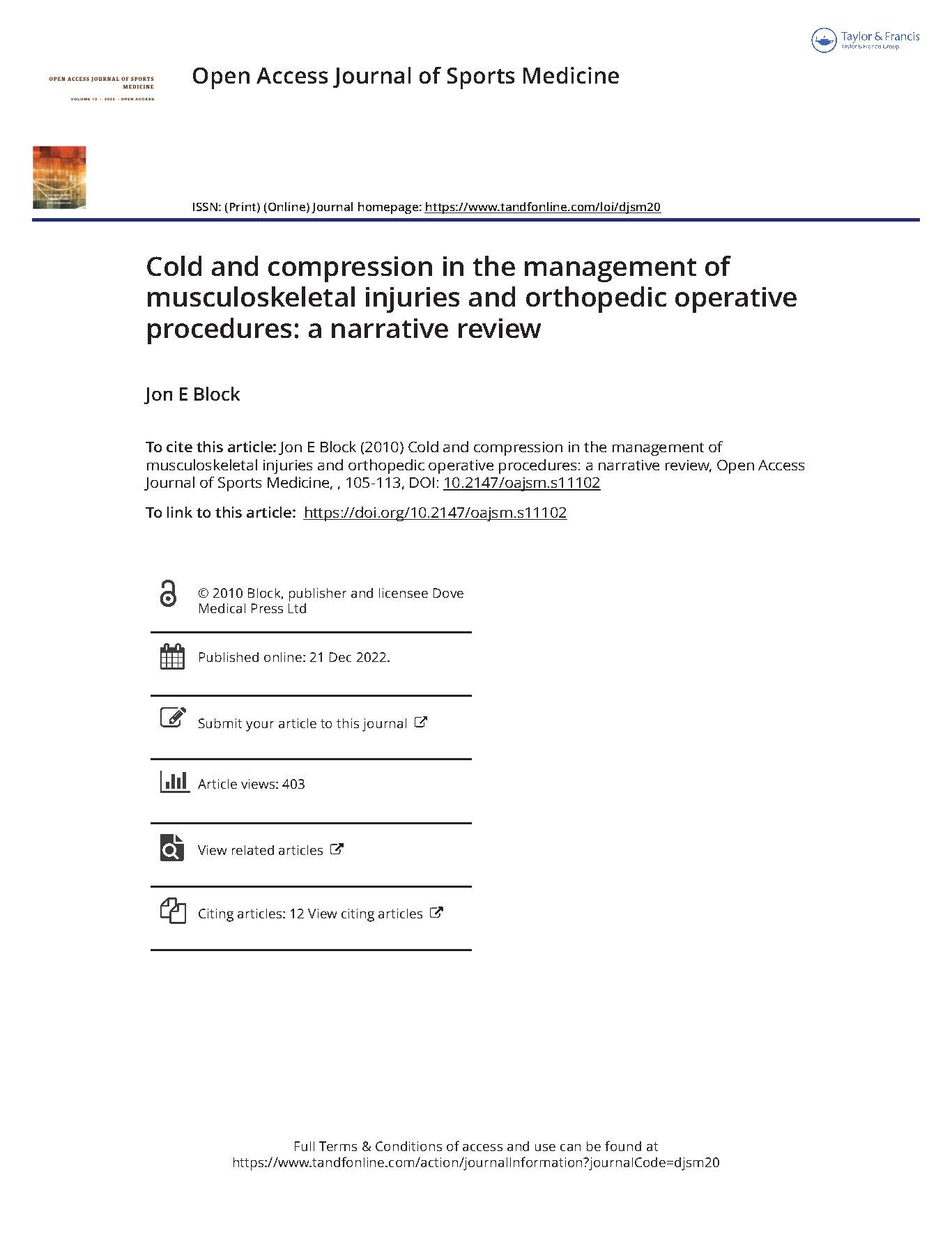

Jon E Block, PhD., Open Access Journal of Sports Medicine Volume 1, 2010 - Issue
Studies of total knee arthroplasty, in particular, appear to offer an excellent model for evaluating the effects of cold compression on post-operative outcomes. Of the seven randomized trials evaluated, five concluded that cold compression therapy was superior to alternative treatment modalities for improving clinical outcomes after knee replacement surgery.


Zübeyir Sari, Onur Aydoğdu, İlkşan Demirbüken, S Ufuk Yurdalan, M Gülden Polat Pain Res Manag . 2019 May2;2019:8514808. doi: 10.1155/2019/8514808.
According to the results, we could report that intermittent pneumatic compression therapy in addition to conventional treatment has significant positive effects on clinical outcomes in patients with knee osteoarthritis. We could also report that intermittent pneumatic compression therapy along with conventional treatment is superior to cold-pack therapy along with conventional treatment in terms of knee swelling in patients with knee osteoarthritis.


Naoto Saito, Hiroshi Horiuchi, Seneki Kobayashi, Masashi Nawata, Kunio Takaoka Arthroplasty. 2004Apr;19(3):334-7. doi: 10.1016/j.arth.2003.10.011.
The pain scores measured on a visual analog scale between days 1 and 4 following surgery were significantly lower for the cryotherapy group than for the control group. Furthermore, postoperative analgesic use by the cryotherapy group was significantly lower than by the control group. The results of this study support the potential benefit of a cold compressive device for pain reduction during the postoperative recovery of patients undergoing THA.
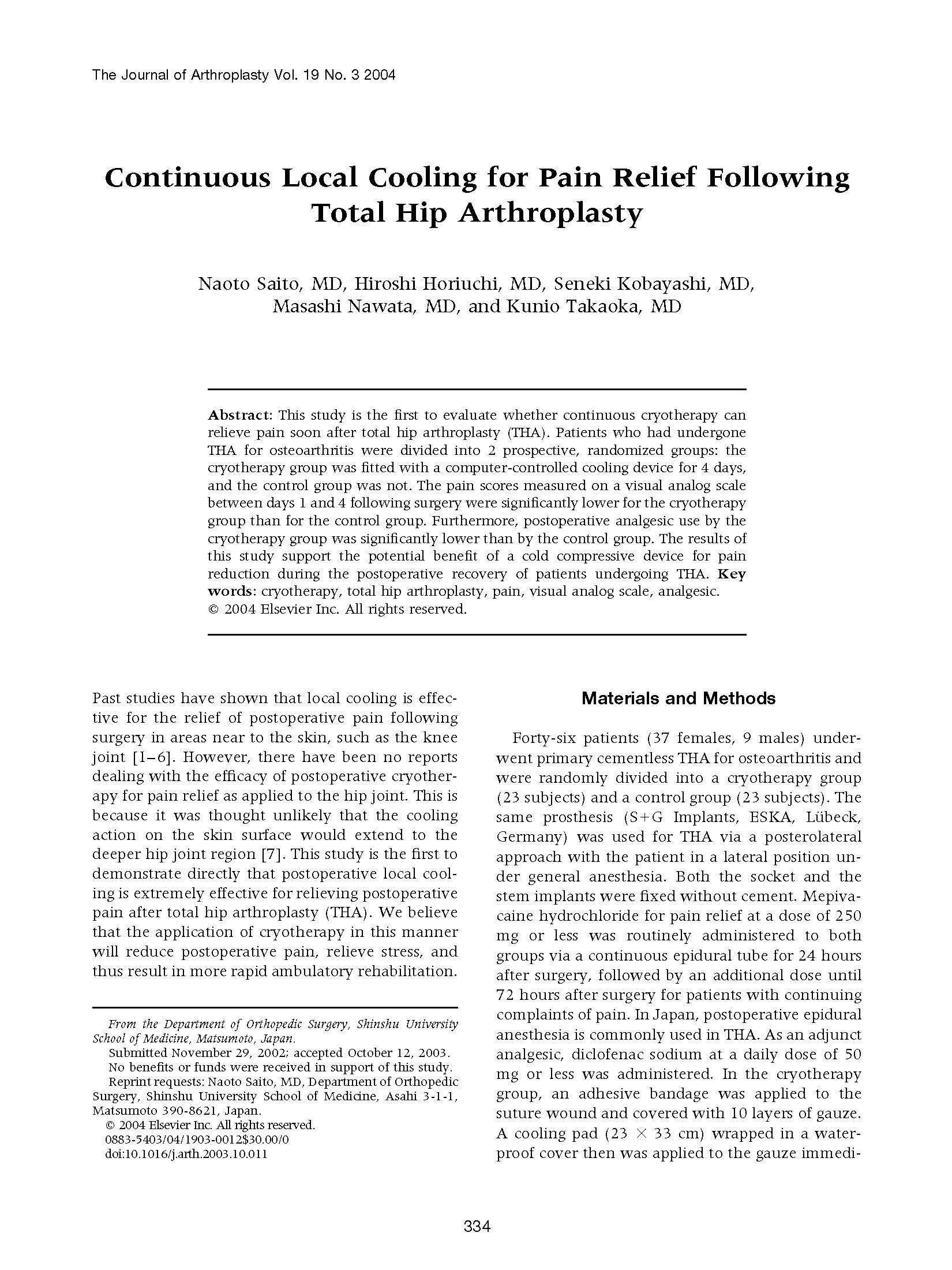

Brian Waterman , John J Walker, Chad Swaims, Michael Shortt, Michael S Todd, Shaun M Machen, Brett D OwensJ Knee Surg. 2012 May;25(2):155-60. doi: 10.1055/s-0031-1299650.
Of all patients, 83% of group 1 discontinued narcotic use by 6 weeks, compared with only 28% of group 2 (p = 0.0008). The use of combined cryotherapy and compression in the postoperative period after ACL reconstruction results in improved, short-term pain relief and a greater likelihood of independence from narcotic use compared with cryotherapy alone.


Vugar Nabi Nabıyev , Selim Ayhan, Prashant Adhıkarı, Engin Cetın, Selcuk Palaoglu, R. Emre AcaroNeurospine DOI:https://doi.org/10.14245/ns.1836070.035glu
The results of this study demonstrated a positive association between the use of DC therapy and accelerated improvement in patients during early rehabilitation after adult spine surgery compared to patients who were treated with painkillers only.

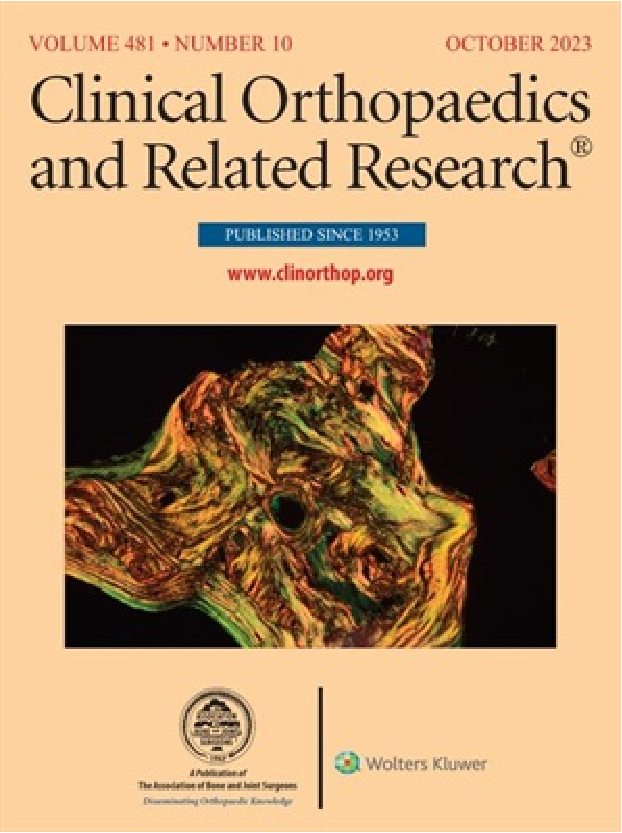
Elsayed Morsi MBBCH, MD (orth) Department of Orthopaedic Surgery, Menoufyia University Hospitals,Menoufyia University, Menoufyia, Egypt
The study compared the range of motion, the volume of hemovac output and blood loss, visual analog pain score, analgesic consumption, and wound healing in the 2limbs of the same patient. This study showed that continuous-flow cold therapy is advantageous after TKA because it provides better results in all theare as compared.


Ianiv Klaber, Eugene Greeff, John O’Donnell Journal of Hip Preservation Surgery, Volume 6, Issue 4, December 2019
Patients treated with CC after hip arthroscopy reported lower levels of pain during the early post-operative phase and were able to be discharged home sooner when compared with a matched control group receiving ice therapy alone. A trend toward slower opioid analgesia requirement was observed.
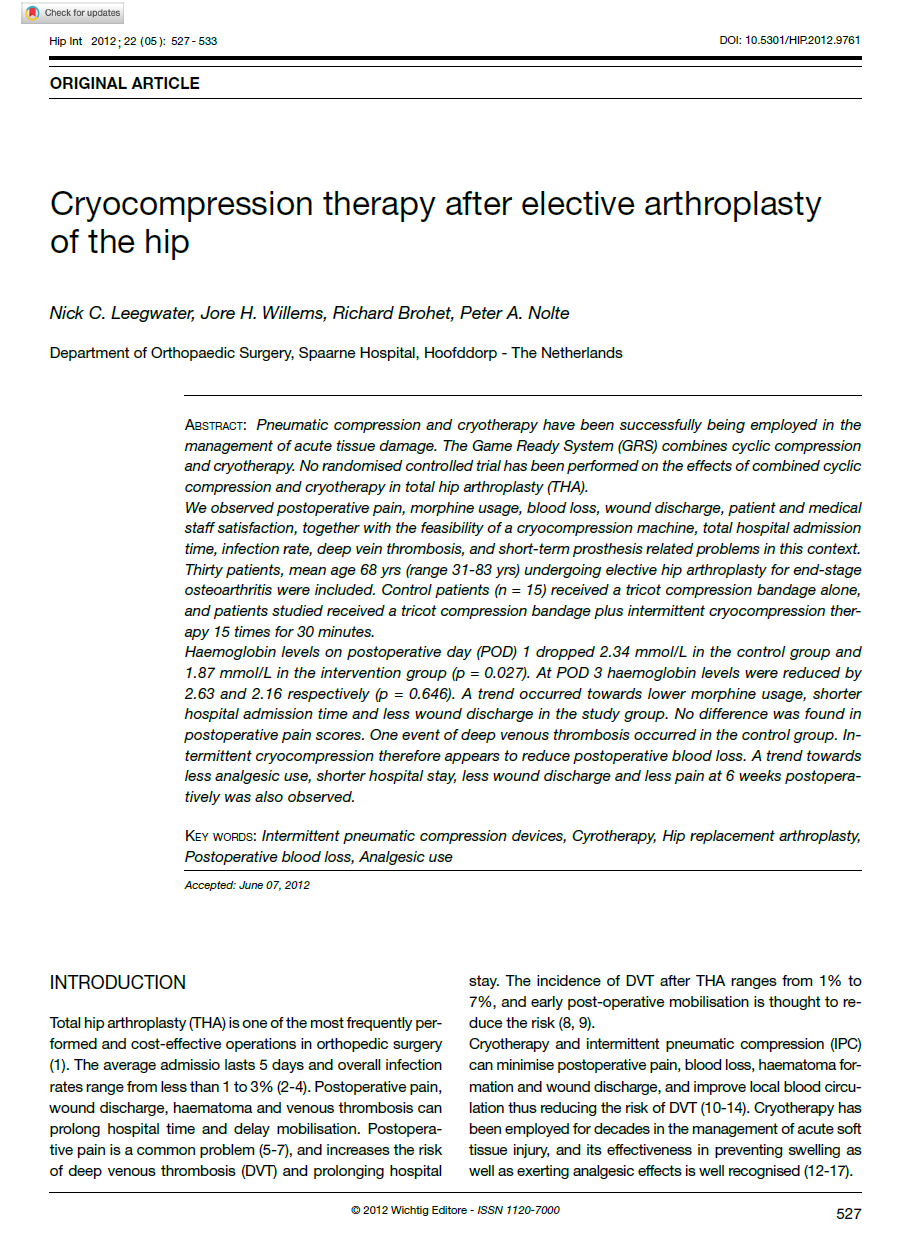
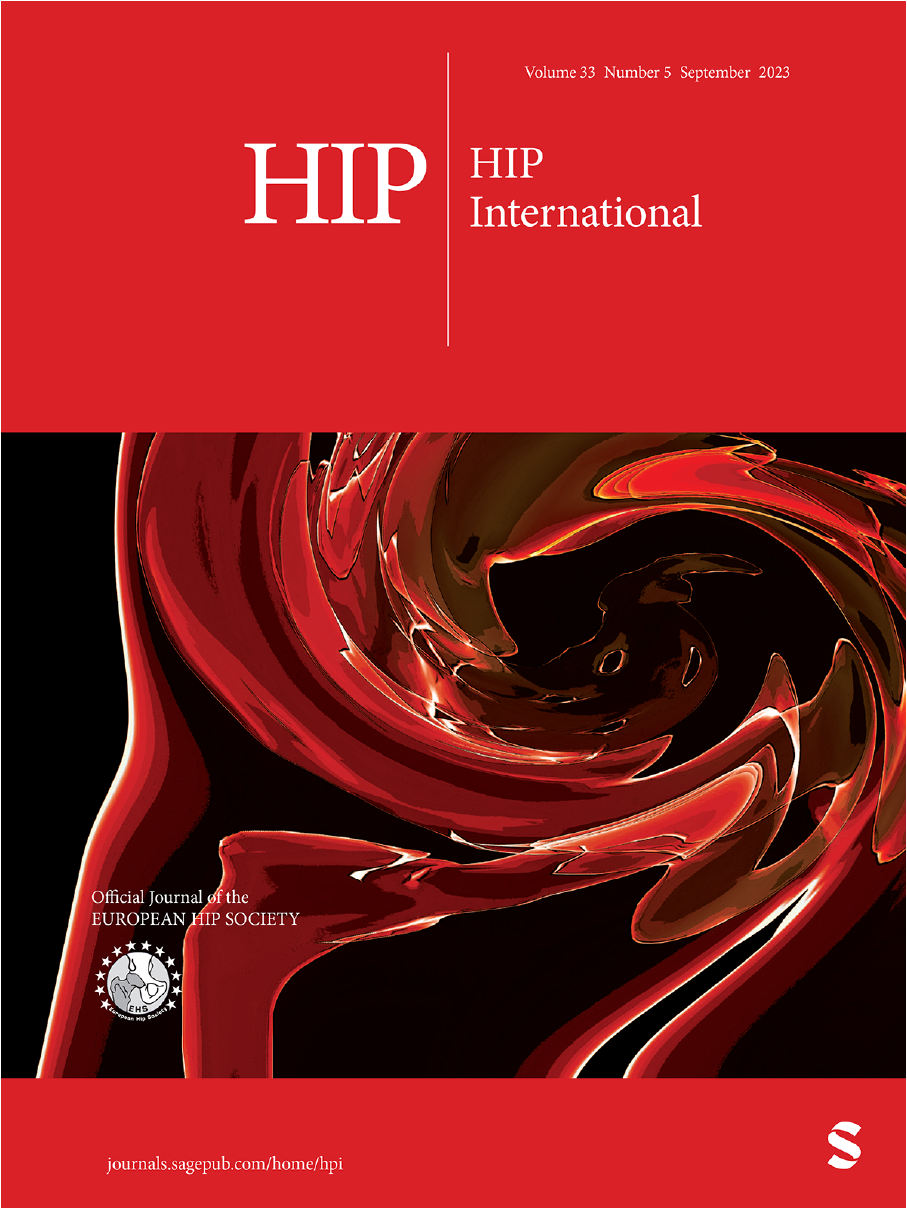
Nick C Leegwater , Jore H Willems, Richard Brohet, Peter A Nolte Hip Int . 2012 Sep-Oct;22(5):527-33. doi: 10.5301/HIP.2012.9761.
A trend towards less analgesic use, shorter hospital stay, less wound discharge and less pain at 6 weeks postoperatively was also observed.